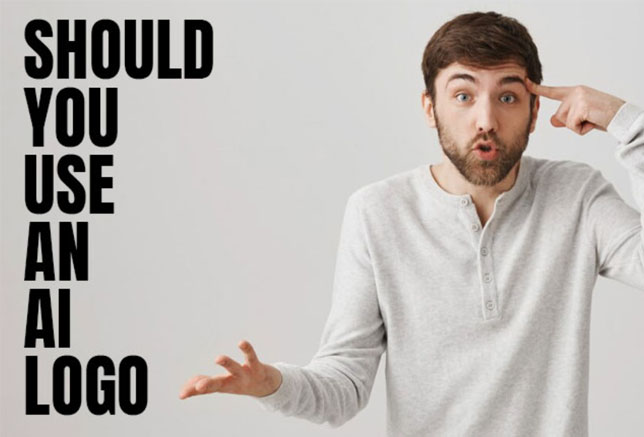The rise of AI-generated logos has sparked a fascinating debate in intellectual property law: Can you trademark a logo created by artificial intelligence? As AI tools like MidJourney and DALL-E churn out sleek, professional designs in seconds, businesses are eager to claim ownership—but the legal landscape is murky.
If you’re considering an AI-generated logo for your brand, here’s what you need to know—and why working with a professional design agency like Left Hand Design might be the smarter move.
The Legal Hurdles of Trademarking an AI Logo
1. The “Human Authorship” Requirement
The U.S. Copyright Office has ruled that AI-generated works cannot be copyrighted because they lack human authorship. Since trademarks often rely on copyright principles, this raises questions about whether an AI logo can be legally protected.
A key case in 2023 (Thaler v. Perlmutter) reinforced that only works created by humans qualify for copyright—and by extension, trademark registration becomes tricky if the logo isn’t substantially modified by a person.
2. Trademark Law vs. Copyright Law
While copyright protects the artistic expression of a logo, trademarks protect brand identity (like logos, slogans, and names) in commerce. The U.S. Patent and Trademark Office (USPTO) hasn’t outright banned AI-assisted logos, but they scrutinize:
- Originality: Is the design unique, or could AI have produced similar versions for others?
- Distinctiveness: Does it clearly identify your brand, or is it too generic?
If your AI-generated logo resembles stock imagery or common design elements, it may be denied.
3. Risk of Infringement
AI tools are trained on existing artwork—meaning your “original” logo could unintentionally copy protected designs. Companies like Getty Images have sued AI platforms for using copyrighted images in training data. If your logo unknowingly replicates someone else’s work, you could face legal challenges.
How to Trademark an AI Logo (If Possible)
| Step | Consideration |
| 1. Modify the Design | A human designer must significantly alter the AI output to claim authorship. |
| 2. Conduct a Trademark Search | Ensure no similar logos are already registered (USPTO’s TESS database helps). |
| 3. Prove Use in Commerce | Trademarks require active business use (e.g., on products, websites). |
| 4. File with the USPTO | Submit an application with evidence of distinctiveness and human involvement. |
Why a Professional Designer Beats AI
While AI logos are fast and cheap, they lack:
✔ Strategic Branding – A designer tailors your logo to your audience, values, and market.
✔ Legal Safety – Professionals ensure originality, avoiding infringement risks.
✔ Trademark Strength – Unique, human-created designs have higher approval odds.
At Left Hand Design, we craft logos that are not just visually striking but legally secure. Our team blends creativity with trademark savvy, giving your brand a competitive edge.
Final Verdict: Should You Use an AI Logo?
AI-generated logos are a tempting shortcut, but relying on them for trademark protection is risky. For a logo that truly stands out—and stands up in court—partnering with a professional design firm is the smarter investment.
Need a Trademark-Ready Logo?
Left Hand Design delivers custom, legally sound branding that sets you apart. Let’s create something uniquely yours—no algorithmic guesswork.
Get a Professional Logo Design
By blending legal insight with design expertise, this post positions Left Hand Design as the go-to solution for brands seeking both creativity and compliance.


